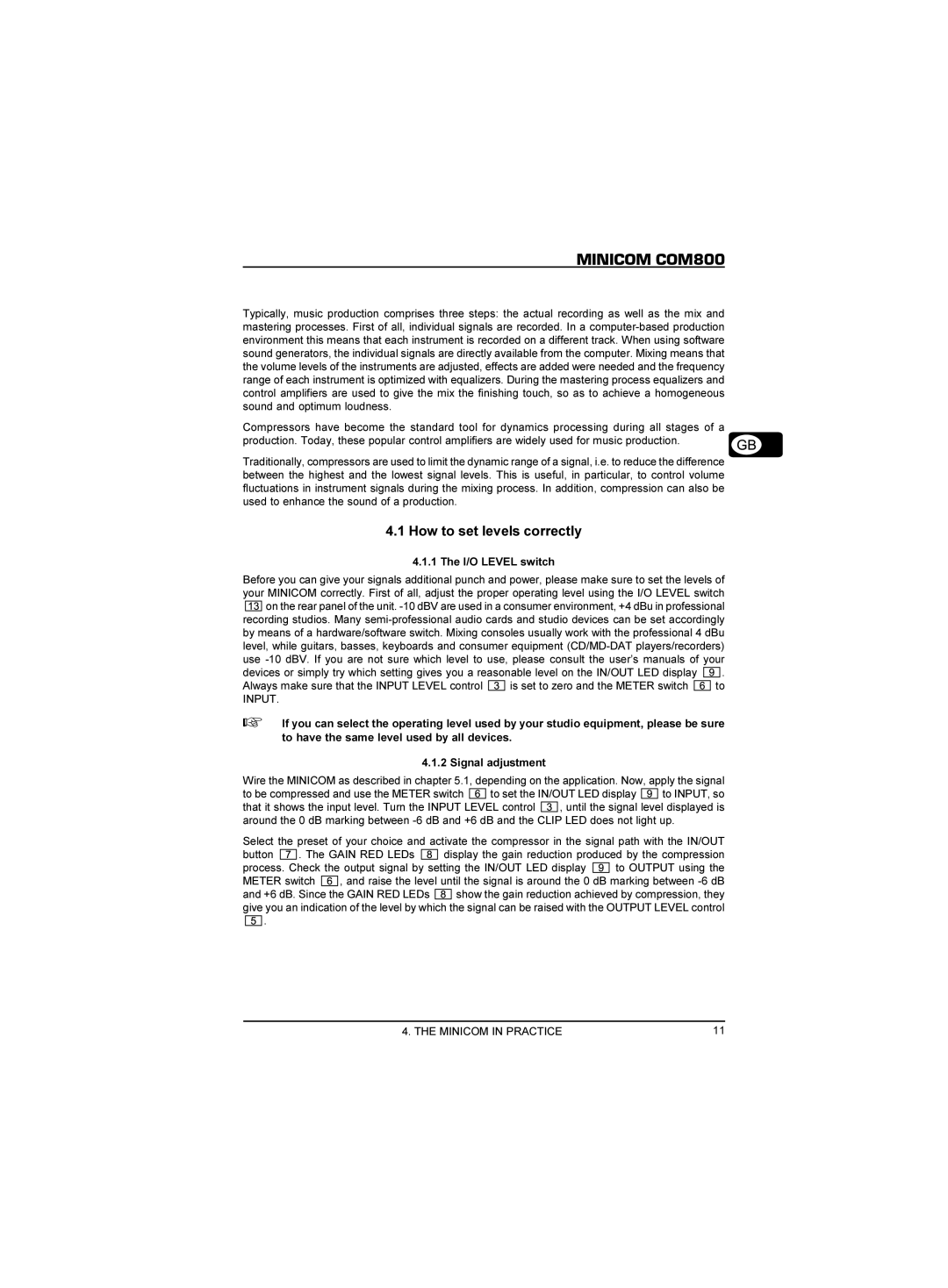
MINICOM COM800
4. THE MINICOM IN PRACTICE
Typically, music production comprises three steps: the actual recording as well as the mix and mastering processes. First of all, individual signals are recorded. In a
Compressors have become the standard tool for dynamics processing during all stages of a production. Today, these popular control amplifiers are widely used for music production.
Traditionally, compressors are used to limit the dynamic range of a signal, i.e. to reduce the difference between the highest and the lowest signal levels. This is useful, in particular, to control volume fluctuations in instrument signals during the mixing process. In addition, compression can also be used to enhance the sound of a production.
4.1 How to set levels correctly
4.1.1 The I/O LEVEL switch
Before you can give your signals additional punch and power, please make sure to set the levels of your MINICOM correctly. First of all, adjust the proper operating level using the I/O LEVEL switch ![]()
![]()
![]()
![]() on the rear panel of the unit.
on the rear panel of the unit.
devices or simply try which setting gives you a reasonable level on the IN/OUT LED display ![]() .
.
Always make sure that the INPUT LEVEL control ![]()
![]()
![]() is set to zero and the METER switch
is set to zero and the METER switch ![]()
![]()
![]() to
to
INPUT.
+If you can select the operating level used by your studio equipment, please be sure to have the same level used by all devices.
4.1.2 Signal adjustment
Wire the MINICOM as described in chapter 5.1, depending on the application. Now, apply the signal
to be compressed and use the METER switch ![]()
![]()
![]() to set the IN/OUT LED display
to set the IN/OUT LED display ![]()
![]()
![]() to INPUT, so
to INPUT, so
that it shows the input level. Turn the INPUT LEVEL control ![]() , until the signal level displayed is around the 0 dB marking between
, until the signal level displayed is around the 0 dB marking between
Select the preset of your choice and activate the compressor in the signal path with the IN/OUT
button ![]()
![]()
![]() . The GAIN RED LEDs
. The GAIN RED LEDs ![]()
![]()
![]() display the gain reduction produced by the compression
display the gain reduction produced by the compression
process. Check the output signal by setting the IN/OUT LED display ![]() to OUTPUT using the
to OUTPUT using the
METER switch ![]()
![]()
![]() , and raise the level until the signal is around the 0 dB marking between
, and raise the level until the signal is around the 0 dB marking between
and +6 dB. Since the GAIN RED LEDs ![]() show the gain reduction achieved by compression, they give you an indication of the level by which the signal can be raised with the OUTPUT LEVEL control
show the gain reduction achieved by compression, they give you an indication of the level by which the signal can be raised with the OUTPUT LEVEL control
![]() .
.
4. THE MINICOM IN PRACTICE | 11 |
